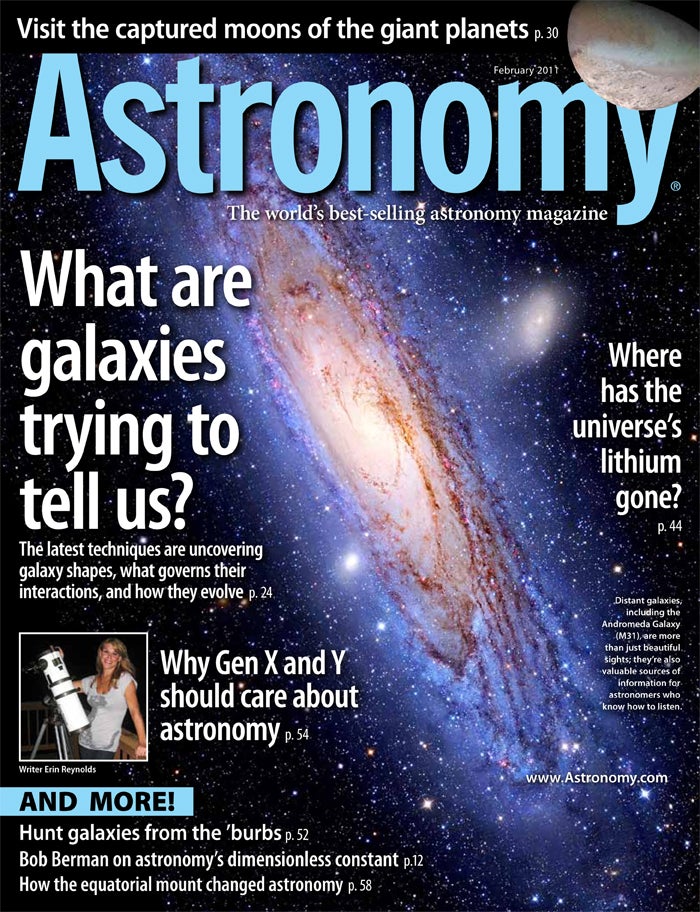
Waukesha, Wis — Since before scientists even realized the true nature of the Milky Way and other galaxies, they have been working hard to understand these star cities. Today, astronomers learn much about galaxies by studying the Milky Way’s neighbors through wide-field sky surveys. From how they evolve to what gives galaxies their shapes, Astronomy Assistant Editor Bill Andrews explains these insights in “What are galaxies trying to tell us?”Andrews focuses on how the Sloan Digital Sky Survey, the Two Micron All-Sky Survey, and the Galaxy Evolution Explorer have helped scientists learn about the inner workings of our galactic neighbors. For example, astronomers have found more evidence that a galaxy’s central black hole is closely related to the evolution of the galaxy itself. In addition, mergers and interactions with nearby galaxies don’t solely determine a galaxy’s characteristics.For more details on what these star cities tell astronomers about galactic evolution, pick up the February issue of Astronomy, on newsstands January 4.
“Captured moons of the giant planets”
Our solar system’s outer planets (Jupiter, Saturn, Uranus, and Neptune) host irregular satellites — objects that orbit farther out and in paths tilted to those of regular satellites. Astronomers have cataloged more than 100 of these objects, but are still unsure how they got to their current positions in the solar system. In “Captured moons of the giant planets,” Associate Editor Liz Kruesi describes what we know about these oddball satellites and the current efforts scientists employ to determine where they came from.
“Why Gen X and Y should care about astronomy”
Any visitor to a star party would likely notice that there aren’t a lot of young people attending. A constant flurry of technology seems to put stargazing on the backburner for the younger generations. How can we rectify this problem? In “Why Gen X and Y should care about astronomy,” Karen Jennings, a Generation Y amateur astronomer, explains why young adults should be interested in the field and the few easy steps it takes to get into the hobby.
February night-sky events visible without optical aid
- February 4 — Mars is in conjunction with the Sun.
- February 28 — the Moon lies near Venus before dawn both today and tomorrow.
Also in the February 2011 Astronomy
- “Where has all the lithium gone?” — A relative lack of lithium in ancient stars means scientists don’t completely understand how stars evolve or how the Big Bang forged the first elements.
- “How to hunt galaxies from the suburbs” — You can see galaxies through moderate light pollution. The key is knowing where to look.
- “How the equatorial mount changed astronomy” — An innovative design that allowed telescopes to track the sky made it the star of the 19th century — and today.
- “The Sky this Month” — Exclusive pullout star charts will guide you through the night sky.
- The February issue of Astronomy also includes Astro News, Bob Berman’s Strange Universe, Glenn Chaple’s Observing Basics, Tony Hallas’ Imaging the Cosmos, David Levy’s Evening Stars, Stephen James O’Meara’s Secret Sky, Ask Astro, The Cosmic Grid, Deep-sky Showcase, New Products, Letters, and Reader Gallery.









